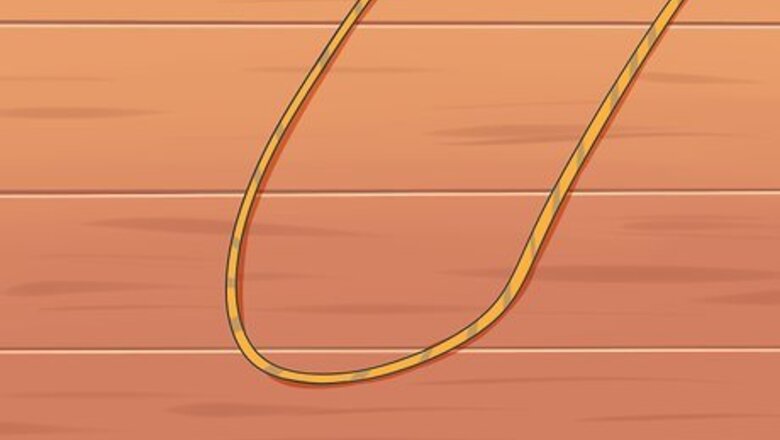
views
Making A Basic Single-Rope Ladder

Set a single length of rope down on a flat surface and form it into a "U" shape. Take hold of the rope on the end of the right side of the "U" and slide your hand down the rope to measure out 1 foot (30 cm) of rope.

Position the rope between your two hands into an "S" shape. Bring your hands together to squish the "S" down horizontally.
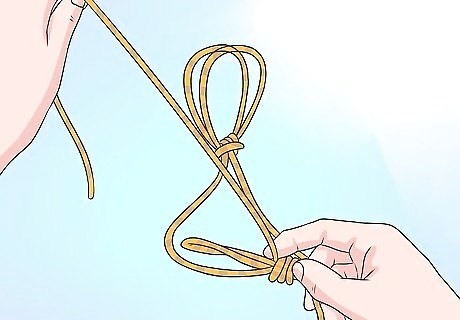
Make the first rung of the ladder by taking the left end of the rope and threading it through the first, left bend of the "S." Bring the end of the rope under the bottom curve, wrapping it around the whole "S" four times. Feed the end of the rope through the second, right bend of the "S" to secure the tie and complete the first rung.
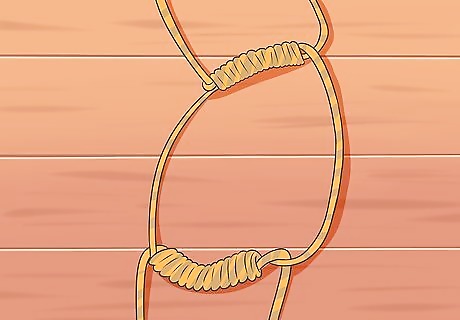
Repeat this as many times as you need to create the rope ladder to your desired length.
Making a Rope Ladder With Wooden Rungs
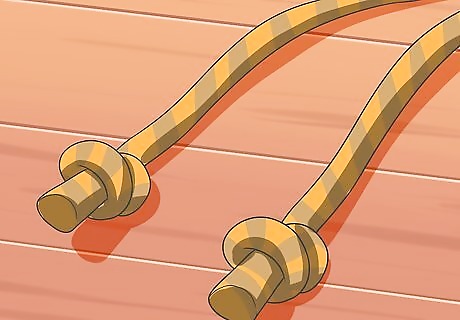
Prepare two lengths of rope by binding or melting them at the ends. Do this to prevent your newly cut rope from fraying or unraveling. Binding the ends of a rope is called whipping. Take some twine and run it along the length of the rope until you almost get to the rope’s end. Double back when the length of the twine is equal to around one and a half times the diameter of the rope. The twine should form an upside down “U” shape. Wrap the twine tightly along the “U”, and put the end of the twine through the loop at the top. Now, pull both ends of the twine until the loop is pulled underneath the whipping. Cut the ends of the twine so that they don't stick out and the whipping looks neat. It is best to use natural fibre twine when whipping natural fibre rope as it will be less likely to slip off. If you are using a synthetic rope, wrap the ends with some tape, then melt them over a flame.

Lay the rope flat on the ground, and make an overhand loop around 15 inches (38 cm) from the top-end of your rope. To make an overhand loop, take the working end of the rope and place it over the standing part. This loop is the first step of forming the knot which will hold the first wooden rung. The working end of the rope is the part of the rope which is being actively used to form a knot. The standing part of the rope is the portion of the rope which is not being actively used to form a knot. It is all of the rope in the opposite direction of the working end.

Pull the standing part through the overhead loop. To do this, first put your fingers through the underside of the loop, and grasp the standing part. Now, pull the standing part through the overhead loop. This should form a new loop.

Insert a wooden rung into the new loop formed by the standing part and tighten the rope. Move the rung into the desired position, and tighten the rope. The resulting knot should be visible on the top and the bottom of the rung. The rung will be fairly secure at this point, but tying an overhand knot beneath it will greatly decrease any likelihood of the rung moving down the rope. To tie an overhead knot, make an overhand loop, then pass the working end over, then through the loop. Make sure the overhand knot is directly below the knot supporting the rung.
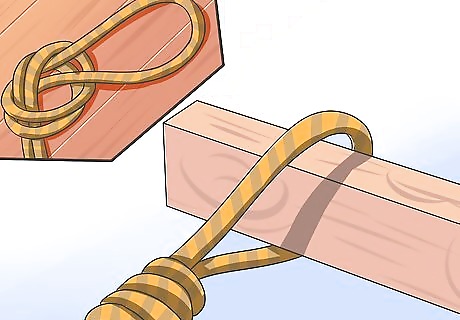
Repeat the process on the other length of rope. Take care to make sure that your rungs are level. Crooked ladder rungs will increase the likelihood of a fall.
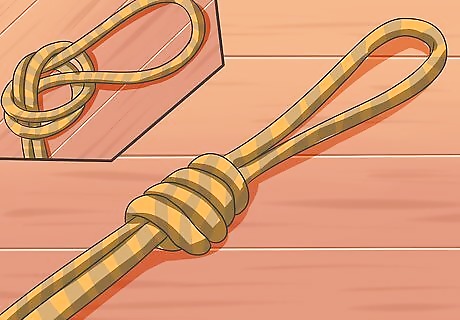
Start the next overhand loop anywhere from 9 to 15 inches (23 to 38cm) from the previous wooden rung. Space your rungs uniformly, and in a manner that will allow you to climb comfortably. Keep adding rungs until your ladder reaches the desired length.
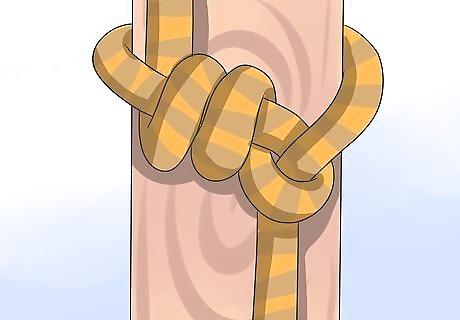
Secure your ladder at the top. To do this, use either a timber hitch or a rolling hitch knot. To tie a timber hitch, wrap the working end around the pole or branch you intend to attach your ladder to all the way around once. Cross the working end over the standing part and continue to wrap the working end around the pole at least twice more. Pull the rope taut to tighten it. If you need more grip, wrap the working end around the standing part a few more times. A timber hitch is ideal for attaching a rope ladder because the greater the amount of pulling force exerted on the knot, the tighter it becomes. To tie a rolling hitch, take the working end of the rope and wrap it completely around your stake at least three times. Take the working end and place it over the standing part. Now wrap the rope around the stake on the other side of the standing part a few times. Tuck the working end underneath the bit of rope which crossed over the standing part and pull it tight. A rolling hitch holds up very well against a horizontal pulling force, so it is ideal if you are attaching your ladder to horizontal stakes or poles. As with the timber hitch, if more grip is required, wrap the working end around the pole a few more times.
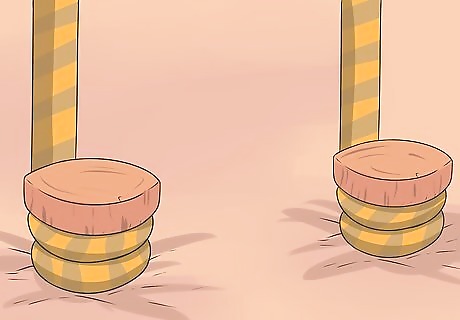
Secure your ladder at the bottom. This is optional, but securing your ladder to the ground will greatly increase its stability and make it easier to climb. If you are going to secure your ladder to the ground, be sure to leave enough rope to do so; 15 inches (38cm) or more should do the trick. Wrap each leg of your ladder to a stake at a 45-degree angle and secure it with a rolling hitch.

















Comments
0 comment